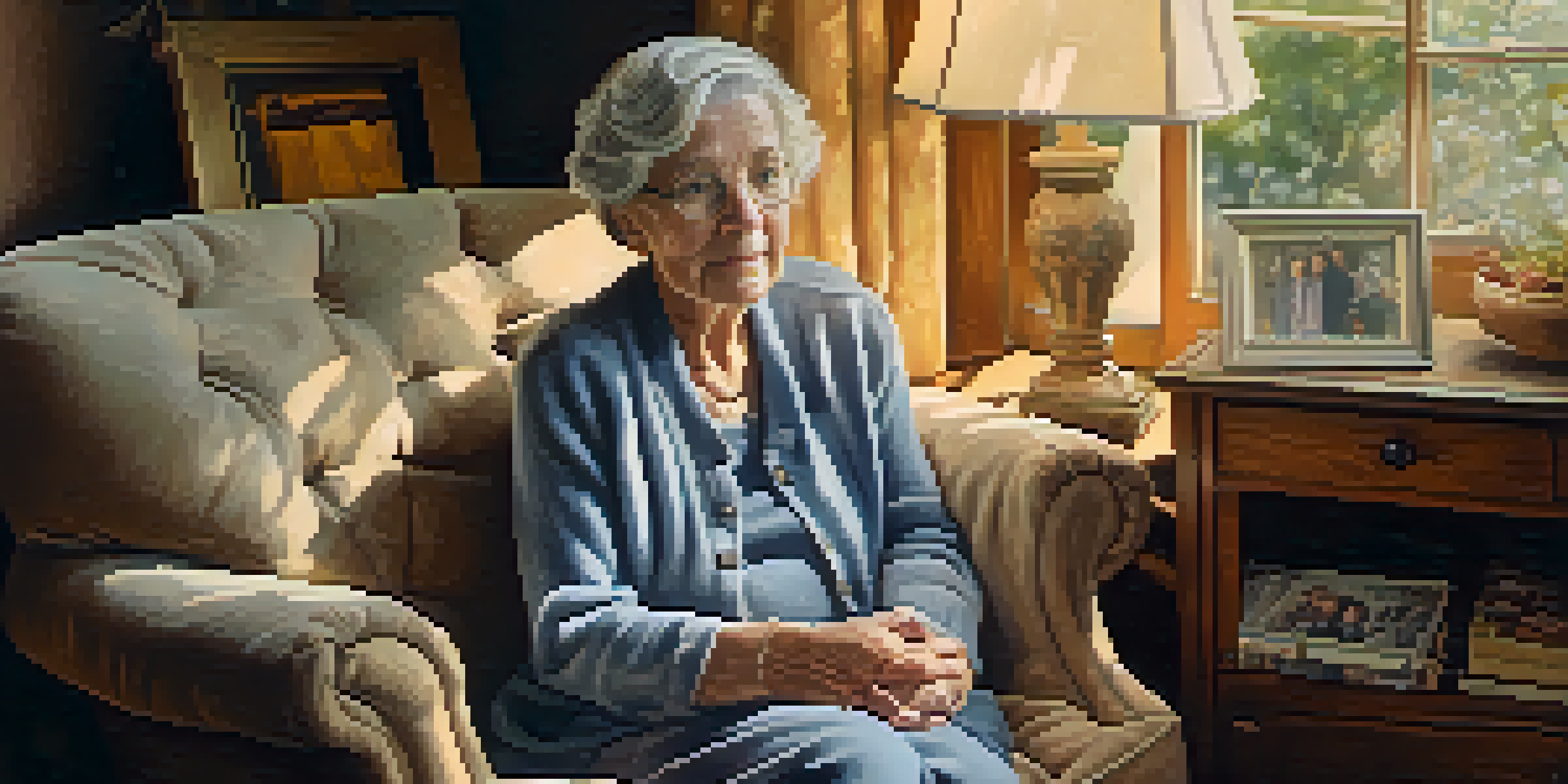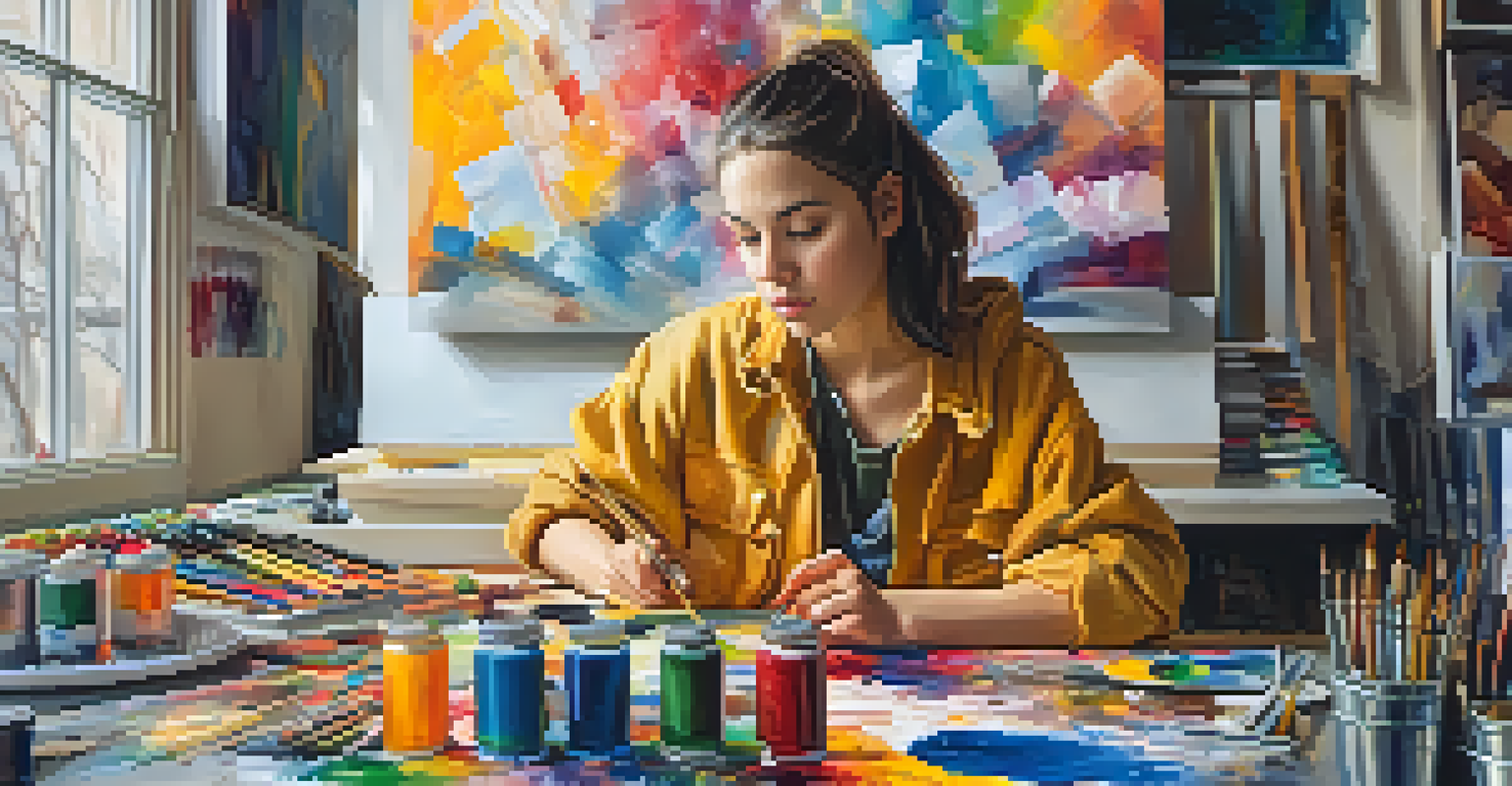The Art of Memory: Subconscious Influences in Portraiture

Understanding Portraiture: More Than Just a Face
Portraiture is often seen as a straightforward depiction of a person, but it dives much deeper than surface-level appearances. Each stroke of the brush or click of the shutter captures not just features but emotions, histories, and stories. Artists aim to convey a sense of identity and personality, inviting viewers to connect with the subject on a deeper level. This connection is often rooted in shared experiences or memories, making the artwork resonate more profoundly.
Every portrait that is painted with feeling is a portrait of the artist, not of the sitter.
Consider how a portrait of a loved one can evoke nostalgia, reminding you of cherished moments. It’s these subconscious influences that shape our perceptions of the subject, often without us even realizing it. For instance, seeing a portrait of a grandparent may not just remind you of their physical traits but also of the stories and experiences that define them. Thus, portraiture becomes a canvas for both the artist's and the viewer’s memories.
In this way, portraiture transcends mere representation, becoming a dialogue between past and present. Artists intentionally infuse their works with elements that evoke memory, such as color schemes or specific poses. This interplay of memory and emotion is what transforms a simple portrait into a powerful narrative.
The Role of Memory in Artistic Expression
Memory serves as the backbone of artistic expression, influencing how artists approach their subjects. When an artist reflects on their past encounters or relationships, it shapes the way they depict their subjects. For instance, an artist might recall a moment spent with a friend and infuse that warmth into their work, creating a more relatable and emotive portrait.

Moreover, memory can also manifest in the techniques and styles artists choose to employ. Techniques like impressionism capture fleeting moments, much like memories themselves, emphasizing emotion over exact likeness. This allows the viewer to see not just the subject, but the essence of their relationship with the artist, further enriching the narrative.
Portraits Capture Deep Emotions
Portraiture goes beyond physical likeness, capturing emotions and stories that resonate with viewers.
Thus, memory becomes a tool for connection, bridging the gap between artist and audience. Each brushstroke or photographic detail carries the weight of shared experiences, allowing viewers to engage with the work on a personal level. This emotional resonance can transform a simple portrait into a profound exploration of the human experience.
Subconscious Influences: How They Shape Perception
Our subconscious mind plays a crucial role in how we perceive art, particularly in portraiture. When viewing a portrait, our brains subconsciously draw upon past experiences and emotions associated with similar faces or situations. This process can lead us to form connections or judgments that may not be immediately apparent.
Art is the most beautiful of all lies.
For example, a subject’s expression might evoke a feeling of joy or sorrow based on our own memories, creating a personal narrative unique to each viewer. This is why two people can look at the same portrait and walk away with entirely different feelings or interpretations. The emotional landscape of the viewer heavily influences their experience of the artwork.
Understanding these subconscious influences allows artists to craft portraits that resonate more deeply. By intentionally selecting expressions, backgrounds, or colors, artists can evoke specific memories or feelings in their audience. This awareness enriches the viewer’s experience, allowing for a more profound connection with the artwork.
Cultural Memory: Portraiture Reflecting Society
Cultural memory plays a significant role in portraiture, as artworks often reflect the societal context in which they were created. Artists draw from shared cultural experiences, historical events, and societal norms, embedding these elements within their portraits. This creates a rich tapestry of meaning that can speak volumes about a society's values and beliefs.
For instance, portraits from different eras can reveal shifts in societal standards of beauty, gender roles, and class distinctions. A portrait from the Renaissance period might emphasize nobility and grace, while contemporary works often challenge these ideals, reflecting a more diverse and inclusive society. This evolution showcases how cultural memory informs artistic expression.
Memory Shapes Artistic Expression
An artist's personal and cultural memories influence their portrayal of subjects, enriching the narrative within the artwork.
By examining portraiture through the lens of cultural memory, we gain insights into not just the individual subjects but also the collective human experience. Artists serve as cultural historians, using their works to comment on and preserve the narratives of their time. This dynamic interplay between personal and cultural memory enriches our understanding of portraiture’s power.
The Impact of Personal Experience on Portraiture
An artist's personal experiences significantly influence their approach to portraiture. Memories of family, friendships, and significant life events often shape how they perceive and depict their subjects. For instance, an artist who has experienced loss may infuse a sense of longing into their portraits, capturing the complexities of human emotion.
These personal narratives can lead to a more authentic representation of the subject, as artists draw upon their emotions and memories to create depth. When an artist paints their child, for example, the result is more than just a likeness; it encapsulates love, hope, and even fears about the future. This emotional investment transforms the portrait into a piece of storytelling.
Ultimately, personal experience adds a layer of authenticity to portraiture that resonates with viewers. The emotional truths captured in these works invite audiences to reflect on their own memories and experiences, creating a shared space of connection. This interplay between the artist’s personal journey and the viewer’s interpretation makes portraiture a unique form of storytelling.
Memory Techniques in Portraiture: A Closer Look
Artists often employ various memory techniques to enhance their portraiture, creating a more evocative experience for viewers. Techniques such as layering colors, utilizing symbolic imagery, or incorporating specific settings can evoke memories and emotions associated with the subject. These elements work together to create a narrative that resonates on multiple levels.
For example, an artist might choose to paint a subject surrounded by objects that hold personal significance, such as a favorite book or a family heirloom. These details invite viewers to engage with the portrait on a deeper level, encouraging them to explore their own memories. Such intentional choices transform a simple likeness into a multi-dimensional story.
Technology Transforms Portrait Art
Advancements in digital and immersive technologies are revolutionizing how artists explore and express memory in portraiture.
Additionally, the use of light and shadow can evoke feelings of nostalgia or mystery, further enhancing the emotional depth of the work. Artists are mindful of how these techniques influence perception, allowing them to create portraits that linger in the viewer’s mind long after they've looked away. This thoughtful approach to memory techniques enriches the overall impact of portraiture.
The Future of Memory in Portraiture: Trends and Innovations
As technology advances, the future of memory in portraiture is evolving, introducing new mediums and methods for artistic expression. Digital tools and software allow artists to manipulate images and create dynamic portraits that blend realism with abstraction. This innovation opens up new avenues for exploring memory and emotion in ways that traditional methods may not capture.
Moreover, the rise of virtual reality and augmented reality offers artists unique platforms to immerse viewers in their works. Imagine stepping into a digital portrait where you can experience the memories and emotions of the subject firsthand. This kind of interaction could revolutionize how we perceive and relate to portraiture, making it an even more personal experience.

As artists continue to experiment with these new technologies, the essence of memory in portraiture remains at the forefront of their creative process. The goal is still to forge connections and evoke emotions, but the methods are becoming more diverse and engaging. This exciting evolution promises to keep portraiture relevant, resonant, and deeply impactful for future generations.